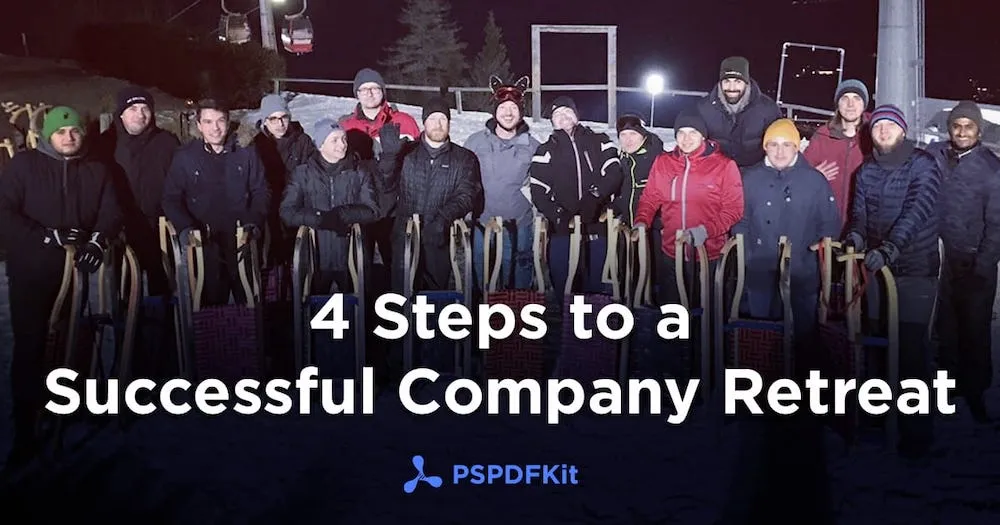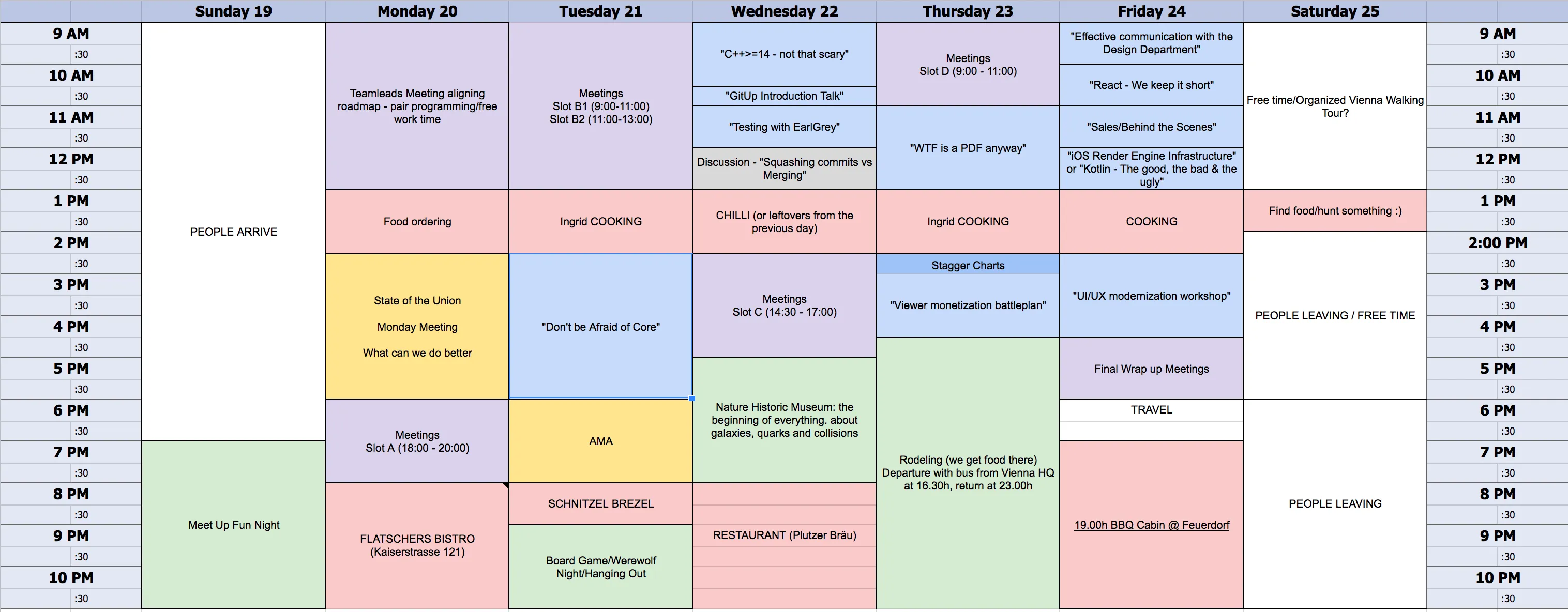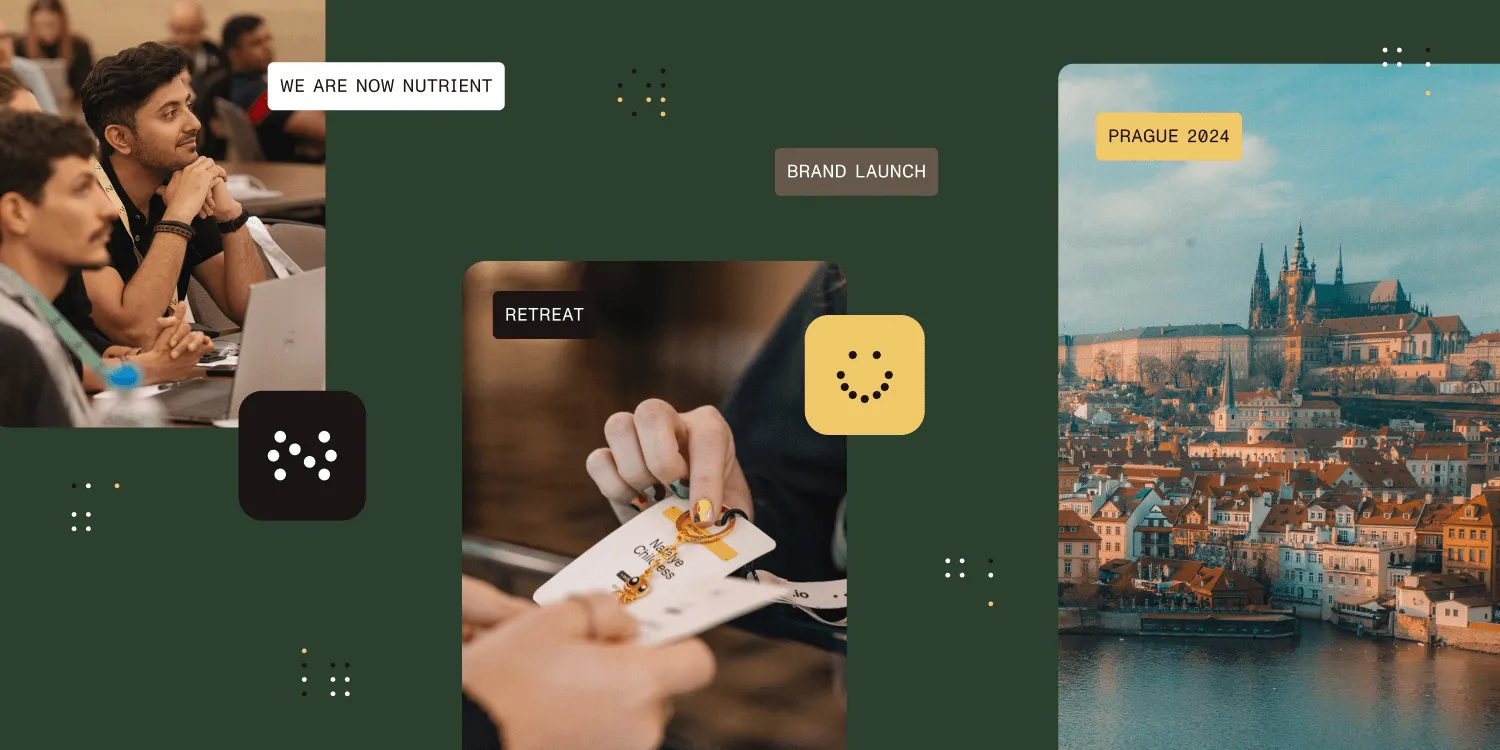4 steps to a successful company retreat
Table of contents

Whether you work remotely or go into the same office every weekday, changing the scenery to help cultivate a close-knit work culture with a company retreat is important. For companies like PSPDFKit, which are distributed and don’t often have face to face communications, they are vital.
Now you’ve decided it was time for your company or team to have a work retreat. You’ve estimated the costs, set a budget, booked a place, travel is taken care of when it hits you that you’re not exactly sure how to use the time effectively. You want your team to bond, but you also want to use the time wisely to help grow, solve that difficult problem with a teammate and plan out the roadmap. So let’s talk about some imporant steps to organize a successful company retreat.
People looking at PDFs. (yes, really, it's on the wall) . . . . . . . #pdf #pspdfkit #learning #meeting #wtfisapdf #streams #objects #numbers #arrays #indirectobjects #waitingforfood #happyfebruary #busylife #workhardplayhard #workculture(opens in a new tab) A post shared by PSPDFKit (@pspdfkit) on Feb 23, 2017 at 3:16am PST <script async defer src="//platform.instagram.com/en_US/embeds.js"></script>
Set a schedule
The first step when organizing a company retreat is to come up with a schedule. This may sound basic, but the worst thing you can assume is that when your team gets to the retreat, things will just happen organically. The larger the size of the group, the more important having an explicitly organized use of time for everyone is. If you don’t have a schedule set, chaos will ensue. People will wonder when do things start, how long they should work, what time the dinner is, or when they can bring up their ideas.
When coming up with your schedule, be mindful of the other extreme though as well. Do not plan out every single minute of the retreat to the point that there is not enough free time or flexibility should a meaningful discussion carry over past an allotted time.
Determine the goals
Imperative to setting a schedule is knowing what the goals of the company retreat are. At PSPDFKit, we have two company retreats a year that end up in execution slightly varying from the other. Typically, our winter retreat is held in Vienna at our HQ in February and tends to be more heavily work related while our summer retreat is held somewhere sunny and tends to be more focused on team bonding.
Both retreats share some common broader goals:
- Help team members get to know each other and the company
- Share knowledge across teams
- Focus on things that are better done in person with the entire team in the same location versus being remote
- Enhance communication across the whole company
- Communicating our vision for the SDK and PDF Viewer(opens in a new tab)
- Make memories
The team is ready and prepared for some delicious Vienna Schnitzels! 😋 . . . . . . . #happyfebruary #pspdfkit #schnitzel #workday #busylife #ilovemyjob #workhardplayhard #photooftheday #passion #waitingforfood(opens in a new tab) A post shared by PSPDFKit (@pspdfkit) on Feb 23, 2017 at 2:51am PST <script async defer src="//platform.instagram.com/en_US/embeds.js"></script>
Planning things to do
So what can you actually do to accomplish those goals? Here’s a look at our schedule from the last retreat in February.

As you can see, we have a mix of activities from meetings, to talks, to events, to dinners. We decided to start off the week with our State of the Union and have our usual weekly Monday hang out in person. We knew now that we had grown to 36 people that each team needed their own time to meet and go over things in person, so we front loaded the week with those meetings. We then transitioned to the rest of the week being more heavily weighted towards individual talks. Before the retreat, we had anyone who wanted to volunteer to give an individual talk to list their topic. We then voted as a company on what talks people wanted to hear most. We tried to end the work related activities by 5 PM or 6 PM at the latest so that each night we could spend time getting to know one another and making memories sledding, at the museum or eating at a cool restaurant.
As I mentioned before, February tends to be our more heavily work related company retreat. While this schedule was our planned course of attack, in reality, the week did not happen exactly as rigidly as planned, which is fine. Sometimes lunch went longer than an hour, the AMA lead to many discussions that took over the 2 hours allotted time, and we didn’t always start the day at 9 AM after some longer nights.
Sledging Time! . . . . . . #sledging #dangerous #pspdfkit #workhardplayhard #picoftheday #remotework #snow #germknödel #happyfebruary(opens in a new tab) A post shared by PSPDFKit (@pspdfkit) on Feb 23, 2017 at 1:30pm PST <script async defer src="//platform.instagram.com/en_US/embeds.js"></script>
Get feedback
If we learned anything by doing retreats, it’s that you only get better at them by asking your team for honest, anonymous feedback(opens in a new tab). We send out a survey after every retreat and ask for people to rate the retreat and make suggestions. We then share the feedback with the entire team and try to incorporate the criticism and praise into our next company retreat. Our schedule and activities have improved in every retreat because of the feedback. We know that the only way for us to reach our goals is to include our team in the planning.
If you’re wondering whether to have a company or team retreat, I strongly encourage you to do it. Set some goals and create a schedule of activities to reach them. Involve your team in both the setting of those goals and the type of activities you choose. Find the balance between work and team bonding. Get feedback before and after a retreat so that your team is invested. And finally, remember company retreats should ultimately be about making memories!







